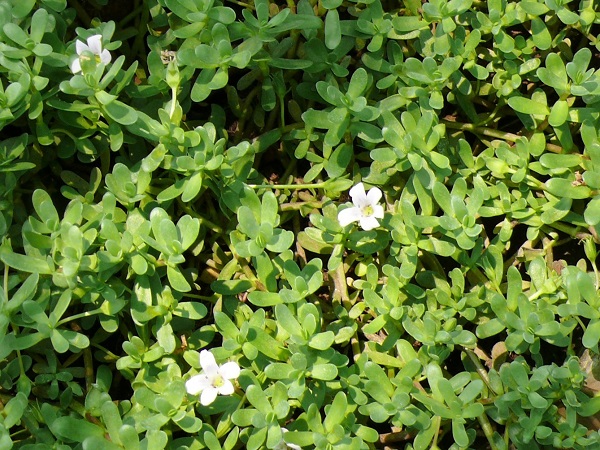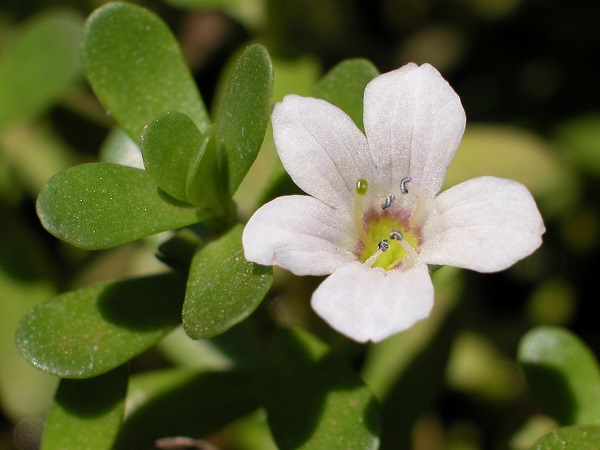
| Family | Plantaginaceae |
| English Name | Brahmi |
| Malayalam Name | Brami, nirbrahmi |
| Tamil Name | Brami |
| Kannada Name | Brahmi, jalabrahmi, kiru brahmi, neeru braahmi |
| Telugu Name | Sambarani chettu |
| Hindi Name | Baam, barami, brahmi, jalbuti |
| Sanskrit Name | Aindri, brahmi, gundala, indravalli, matsyaksi, nirabrahmi |
| Trade Name | Brahmi |
| Part Used | Whole plant |
| In Wild | Yes |
| Under Cultivation | Yes |
| Temperature | NA |
| Rainfall | NA |
| Farmers | NA |
| Traders | NA |
| Institution | NA |
| Individually | NA |
| State/Region | NA |
| District | NA |
| Nursery Information | NA |
| Yield | Approximately 5.5 tonnes/hectare on drying. |
| Economic of cultivation | NA |
| Quantitative quality standards | • Foreign matter: Nil • Ash: Not more than 16.0 per cent • Acid-insoluble ash: Not more than 2.5 per cent • Ethanol-soluble extractive: Not less than 17.0 per cent • Water-soluble extractive: Not less than 18.0 per cent |
| Description | NA |
| Agro technology/Cultivation practices | 1. Planting-stock production: Seeds are very minute and germination is poor. So freshly collected shoot cuttings of 5–10 cm length with internodes and rootlets are the best-suited planting material for cultivation. The nursery soil is mixed with well-decomposed FYM (farmyard manure) at the rate of 3 kg/m2. About 200 m2 of nursery i.e., 210 beds of 10m × 1m, is sufficient for raising seedlings for 1 hectare of the plantation. Freshly collected propagules (shoot cuttings) should be manually embedded in the soil at a distance of 5cm × 10cm in the well-prepared nursery beds followed by light irrigation. The propagules develop roots within a week of planting and are ready for transplanting infield in about 35–40 days. 2. Field planting: Propagules are transplanted in the field at a spacing of 20 cm × 20 cm. Best time for direct planting or transplanting in the field is beginning of rainy season. Propagules take about one week for the establishment and fresh root development. 3. Manuring/Fertilization: For optimum yields, 10 tonnes/hectare of well-decomposed FYM, to be mixed with soil before planting. Regular application of organic manure will take care of the manurial requirement. 4. Irrigation: The crop is preferably kept inundated with water, at 4–5 cm depth, throughout the growth period. Irrigation could be done either weekly or at intervals, depending on the type of soil and availability of water to maintain a constant humidity in the soil. 5. Pest and diseases: Serious pests are not reported. |
| Harversting | The crop can be harvested 75–90 days after planting. The crop should be harvested when plants attain a length of 20–30 cm. The whole plant should be pulled out, uprooted or scraped off manually. |
| Processing | The produce should be dried by spreading it on clean area or sheets in the sun for four to five days, followed by shade drying for the next 7–10 days. The dried material should be stored in clean containers. long storage should be avoided. |
| References | NA |

